In a comparison between bull vs jaguar, we’re diving into a scientific battle between a powerful herbivore and a predator build for killing. The bull, a symbol of power and endurance, stands its ground with muscular strength and dangerous horns. The jaguar, one of the most powerful big cats in the Americas, is a silent stalker known for its crushing bite and agile moves.
While the bull powers in weight and stamina, the jaguar brings precision and hunting instinct to the table. What happens when these two forces of nature clash? Let’s explore their strengths, weaknesses, and who might come out on top. We have added a winner column for each feature for further understanding and with this article you will be able to learn almost all the important information about these nature build creatures.
In this blog post, we’ll explore 10 main categories — from body specs and hunting prowess to senses and social behavior — to determine which of these two animals has the upper hand in a one-on-one fight. This comprehensive comparison of bull vs jaguar is backed by real scientific data. Hope you will enjoy!
1. Body Specifications
| Subtopic | Bull (Bos taurus) | Jaguar (Panthera onca) | Winner |
|---|---|---|---|
| Height at Shoulder | 1.4 – 1.8 meters | 0.63 – 0.75 meters | Bull |
| Length (Head to Body) | 2.4 – 3.0 meters | 1.2 – 1.85 meters | Bull |
| Average Weight | 800 – 1,100 kg | 56 – 120 kg (M), up to 150 kg (rare) | Bull |
| Body Shape | Stocky, barrel-like | Compact and muscular | Jaguar |
| Bone Density | High | Moderate | Bull |
| Muscle Mass | High (especially neck and shoulders) | Extremely muscular for size | Jaguar |
| Horns/Canines | Thick horns, up to 80 cm | 30+ sharp teeth, 4 cm canines | Tie |
| Skull Strength | Dense and built for ramming | Robust bite-adapted skull | Jaguar |
| Forelimb Power | Strong, but not flexible | Extremely powerful paws | Jaguar |
| Neck Strength | Powerful for pushing and ramming | Strong for gripping prey | Bull |
Winner: Bull (6/10)
2. Coat and Coloration
| Subtopic | Bull | Jaguar | Winner |
|---|---|---|---|
| Base Color | Brown, black, white, spotted | Yellow-orange with black rosettes | Jaguar |
| Pattern Complexity | Simple or uniform | Camouflaged rosettes | Jaguar |
| Coat Thickness | Varies by breed | Dense and water-resistant | Tie |
| Seasonal Change | Minimal | Slight molting in seasons | Jaguar |
| Function of Coat | Protection and insulation | Camouflage for stealth hunting | Jaguar |
| Melanin Variants | Some black bulls | Black panther morphs (melanistic jaguars) | Jaguar |
| Camouflage Utility | Poor | Excellent in forests and jungle | Jaguar |
| Fur Texture | Coarse | Sleek and short | Jaguar |
| Heat Regulation | Efficient in temperate climates | Suited for tropical environments | Tie |
| Grooming Behavior | None | Regular self-grooming | Jaguar |
Winner: Jaguar (7/10)
3. Habitat and Range – Bull vs Jaguar
| Subtopic | Bull | Jaguar | Winner |
|---|---|---|---|
| Natural Habitat | Domesticated, farms, grasslands | Rainforests, wetlands, dry forests | Jaguar |
| Geographic Range | Global (domestic) | Central and South America | Tie |
| Climate Adaptability | High (various breeds) | High (tropical and sub-tropical) | Tie |
| Terrain Preference | Open plains, farmland | Dense forests, riversides | Jaguar |
| Water Affinity | Moderate | Strong swimmer | Jaguar |
| Shelter Use | Uses man-made or natural shade | Uses caves, trees, thickets | Jaguar |
| Altitude Range | Sea level to highlands | Sea level to 2,000+ meters | Tie |
| Survival Without Humans | Low | High | Jaguar |
| Nomadic Tendencies | Stationary | Territorial, wide-ranging | Jaguar |
| Threat in Habitat | Mostly prey species | Apex predator | Jaguar |
Winner: Jaguar (7/10)
4. Diet and Hunting
| Subtopic | Bull | Jaguar | Winner |
|---|---|---|---|
| Diet Type | Herbivore (grass, hay) | Carnivore (meat) | Jaguar |
| Daily Intake | 9–12 kg of grass | 2–4 kg of meat | Tie |
| Hunting Skills | None | Expert ambush predator | Jaguar |
| Prey Type | None | Capybara, deer, caiman, tapirs | Jaguar |
| Hunting Technique | N/A | Ambush with skull-biting precision | Jaguar |
| Success Rate | N/A | 50–60% success in favorable terrain | Jaguar |
| Offensive Weapons | Horns, weight | Teeth, claws, stealth | Jaguar |
| Kill Method | N/A | Piercing the skull or spine | Jaguar |
| Digestion | Ruminant, slow | Simple stomach, fast digestion | Tie |
| Food Storage | None | Occasionally hides prey | Jaguar |
Winner: Jaguar (9/10)
5. Strength and Bite Force
| Subtopic | Bull | Jaguar | Winner |
|---|---|---|---|
| Bite Force | N/A | 1,500–2,000 PSI (strongest among cats) | Jaguar |
| Claw Strength | None | Can pierce turtle shells | Jaguar |
| Lifting Power | Can push/pull hundreds of kg | Can drag prey 3–4x its weight | Jaguar |
| Grappling Skill | None | High (can hold and bite) | Jaguar |
| Neck Torque | High (for head-butting) | High (for skull-piercing bites) | Tie |
| Strike Force | High (headbutt and hooves) | Moderate (swipes) | Bull |
| Killing Efficiency | Very low | Very high | Jaguar |
| Damage from Horns/Claws | Blunt trauma | Laceration, deep punctures | Tie |
| Skull Durability | Thick and shock-absorbent | Strong but lighter | Bull |
| Overall Power | High brute force | Compact but lethal | Tie |
Winner: Jaguar (5/10)
6. Speed and Agility – Bull vs Jaguar
| Subtopic | Bull | Jaguar | Winner |
|---|---|---|---|
| Top Speed | 40–50 km/h | 80 km/h (short bursts) | Jaguar |
| Acceleration | Slow | Very fast | Jaguar |
| Turning Ability | Poor | Excellent | Jaguar |
| Jumping Ability | Minimal | Can leap 5–6 meters | Jaguar |
| Climbing Skill | None | Expert climber | Jaguar |
| Swimming Ability | Good | Excellent | Jaguar |
| Maneuverability | Low | High | Jaguar |
| Flexibility | Rigid frame | Highly flexible spine | Jaguar |
| Reflexes | Moderate | Lightning-fast | Jaguar |
| Endurance | High | Moderate | Tie |
Winner: Jaguar (9/10)
7. Intelligence and Learning
| Subtopic | Bull | Jaguar | Winner |
|---|---|---|---|
| Problem-Solving | Low | High | Jaguar |
| Tool Use | None | Observed occasionally | Jaguar |
| Memory | Good | Excellent | Jaguar |
| Social Intelligence | Low | Moderate | Jaguar |
| Learning from Experience | Basic | Advanced | Jaguar |
| Planning Ability | None | Present in hunting strategy | Jaguar |
| Awareness of Surroundings | Moderate | High | Jaguar |
| Communication | Limited vocalizations | Roars, grunts, scent-marking | Jaguar |
| Curiosity | Low | High | Jaguar |
| Adaptability | High (as livestock) | High (as predator) | Tie |
Winner: Jaguar (9/10)
8. Senses and Perception
| Subtopic | Bull | Jaguar | Winner |
|---|---|---|---|
| Vision | Moderate | Excellent night vision | Jaguar |
| Hearing | Good | Very acute | Jaguar |
| Smell | Excellent | Excellent | Tie |
| Taste | Limited | Sharp for detecting meat freshness | Jaguar |
| Touch Sensitivity | Moderate | High (especially in whiskers) | Jaguar |
| Night Vision | Poor | Excellent | Jaguar |
| Sensory Adaptation | Low | High | Jaguar |
| Motion Detection | Moderate | High | Jaguar |
| Eye Placement | Side (wide view) | Front (depth perception) | Jaguar |
| Total Sensory Advantage | Focused on smell | Balanced across all senses | Jaguar |
Winner: Jaguar (9/10)
9. Social and Reproductive Behavior
| Subtopic | Bull | Jaguar | Winner |
|---|---|---|---|
| Social Structure | Solitary or herded | Solitary | Tie |
| Mating System | Polygynous | Polygynous | Tie |
| Offspring per Birth | 1 (rarely twins) | 1–4 cubs | Jaguar |
| Parental Care | None (mothers only for calves) | Strong maternal care | Jaguar |
| Gestation Period | ~280 days | ~100 days | Bull |
| Birth Weight | 25–45 kg | 700–900 g | Bull |
| Maturity Age | 12–24 months | 2–3 years | Tie |
| Courtship Behavior | Minimal | Involves vocalizations and scent | Jaguar |
| Reproductive Frequency | Year-round | Once every 2 years | Bull |
| Lifespan | 15–20 years | 12–15 years (wild) | Bull |
Winner: Tie (4 Bull / 4 Jaguar / 2 Ties)
10. Survival Instinct and Defense
| Subtopic | Bull | Jaguar | Winner |
|---|---|---|---|
| Defensive Weapons | Horns, kicks | Teeth, claws, agility | Tie |
| Fight-or-Flight | Aggressive when provoked | Strategic with stealth | Jaguar |
| Predator Threat | Rare (due to size) | None (apex predator) | Jaguar |
| Escape Ability | Limited | Excellent climber and swimmer | Jaguar |
| Camouflage | Poor | Excellent | Jaguar |
| Territorial Behavior | Moderate | Very strong | Jaguar |
| Danger to Humans | Medium | High (especially black jaguars) | Jaguar |
| Wound Tolerance | High | High | Tie |
| Recovery from Injury | Moderate | Fast in wild cats | Jaguar |
| Final Defense Strategy | Charge | Ambush or retreat tactically | Jaguar |
Winner: Jaguar (7/10)
Interesting Facts – Bull vs Jaguar
Bull
-
Bulls have a four-chambered stomach that lets them digest tough grasses efficiently.
-
Their horns are permanent and grow throughout life, used for defense and dominance.
-
Bulls can detect scents from miles away thanks to their highly developed sense of smell.
-
They live in hierarchical herds led by the strongest male.
-
Bulls are surprisingly playful when young, often engaging in mock fights and energetic frolicking.
-
Despite their size, bulls can turn quickly and jump impressive heights.
-
Bulls communicate with a mix of vocal sounds, body language, and scent marking.
-
They have been symbols of strength and fertility in cultures from Spain to India.
Jaguar
-
Jaguars are the biggest cats in the Americas.
-
They have super strong jaws that can crush turtle shells.
-
Each jaguar has a unique spot pattern.
-
Jaguars love water and are great swimmers.
-
Black panthers in the Americas are actually jaguars with dark fur.
-
They mostly live alone and mark their territory.
-
Jaguars are found mainly in rainforests like the Amazon.
-
They are powerful hunters and can leap long distances.
⚔️ Face-to-Face Fight: Bull vs Jaguar
The Battle Scenario:
Let’s imagine a jaguar encounters a fully grown bull in a forest clearing. The bull, armed with brute strength, horns, and immense size, immediately takes a defensive posture. The jaguar, agile and strategic, assesses the bull’s movement and waits for an opportunity.
Jaguar’s Advantage:
The jaguar won’t fight head-on. Instead, it will aim for a weak spot — most likely the bull’s neck or back, using its ability to leap and bite into the skull or spinal region with a bone-crushing bite force. However, even a slight misstep could result in the jaguar being injured to the death.
Bull’s Advantage:
If the jaguar mistimes the attack or approaches from the front, the bull’s horns and sheer momentum can be lethal. One well-aimed charge could fatally injure the jaguar.
Likely Outcome:
In an open environment or surprise situation, the jaguar’s agility and lethal targeting could win. But in a straight-up fight with no element of surprise, the bull’s sheer weight and defensive weapons could overpower the jaguar.
Final Winner: Jaguar
✅ Why the Jaguar Wins:
- Superior Weaponry: Jaguars have the strongest bite force of any big cat, capable of crushing bones and skulls — a lethal edge in combat.
- Stealth and Agility: Their ambush skills, rapid reflexes, and climbing ability allow them to outmaneuver larger animals.
- Tactical Hunting: Jaguars aim for vulnerable spots like the neck or skull, using precision rather than brute force.
- Sensory Superiority: Excellent vision (especially at night), acute hearing, and heightened awareness make them extremely efficient hunters.
- Predatory Instinct: Jaguars are apex predators with evolved strategies to kill prey much larger than themselves.
❌ Why the Bull Is Defeated:
- Lack of Agility: Bulls are powerful but slow and unable to defend against sudden attacks from behind or above.
- Limited Weapons: Aside from horns and sheer force, bulls lack claws or fangs to retaliate effectively against a fast-moving predator.
- No Hunting Instinct: Bulls are prey animals with defensive strategies, not offensive ones, making them vulnerable to carnivores like jaguars.
- Targetable Weak Points: The bull’s neck and back are vulnerable areas for a jaguar’s ambush attack.
Conclusion: Bull vs Jaguar Who Wins?
In the thrilling battle of bull vs jaguar, the jaguar takes the crown as the ultimate victor. While the bull boasts immense size and strength, the jaguar’s stealth, strategy, and deadly precision give it the upper hand in most combat scenarios. A bull may overpower weaker threats, but against a predator that strikes from the shadows with pinpoint accuracy, brute strength alone is not enough. In nature’s arena, it’s not always the biggest that wins — it’s the smartest and deadliest. So in the clash of bull vs jaguar who wins, the jaguar proves to be the more formidable fighter.
References :
- National Geographic. (n.d.). Jaguar Facts. https://www.nationalgeographic.com/animals/mammals/facts/jaguar
- BBC Earth. (2021). Why Jaguars Are So Powerful. https://www.bbcearth.com/news/the-jaguar
- Britannica. (n.d.). Bull (Animal). https://www.britannica.com/animal/bull
- San Diego Zoo. (n.d.). Jaguar Profile. https://animals.sandiegozoo.org/animals/jaguar
- Animal Diversity Web. (n.d.). Panthera onca (Jaguar). https://animaldiversity.org/accounts/Panthera_onca
Read More Bull fights
Don’t forget to share your ideas. Leave a comment!
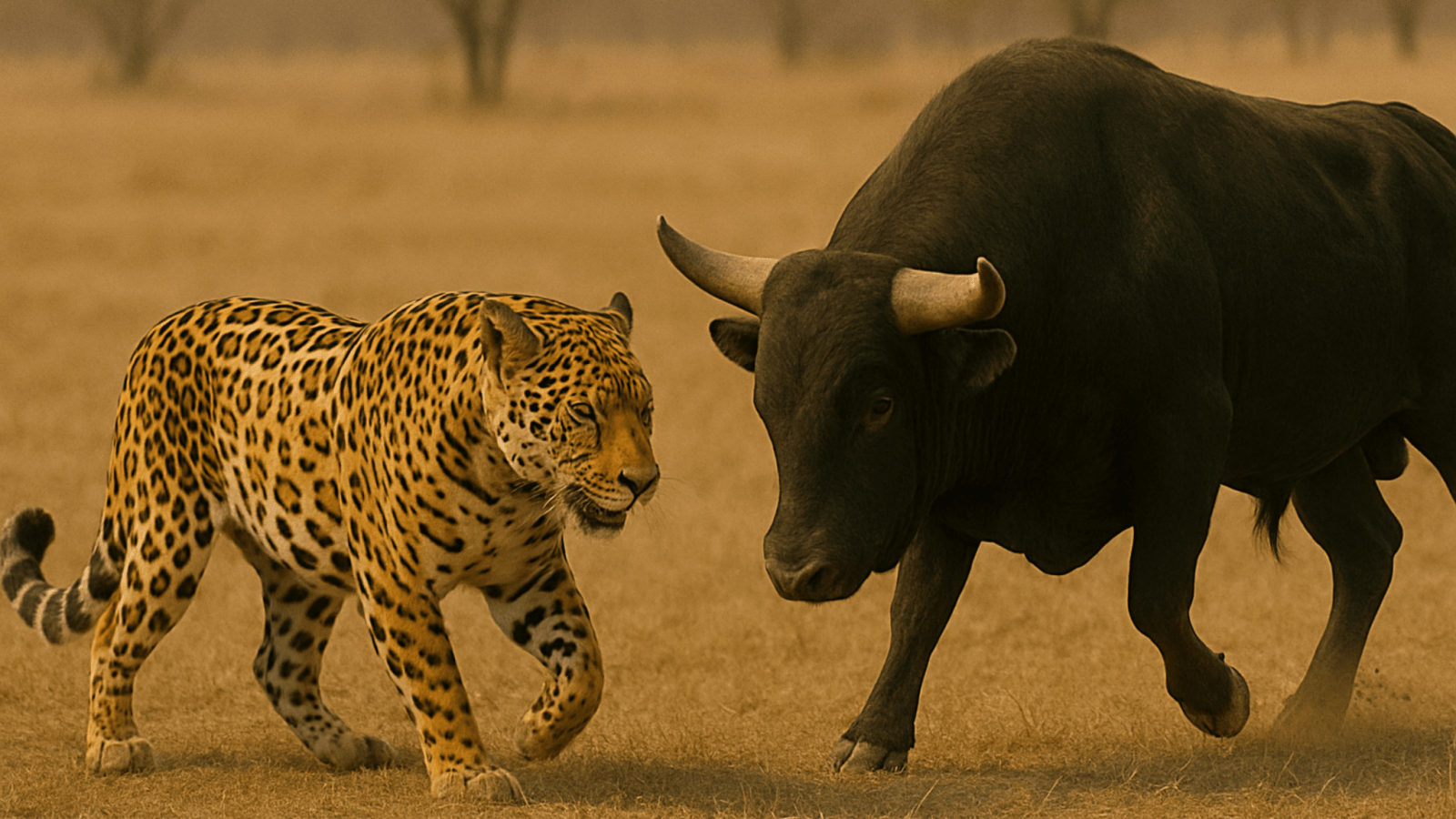
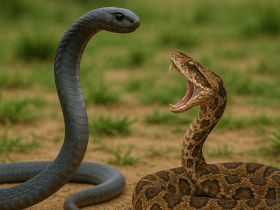
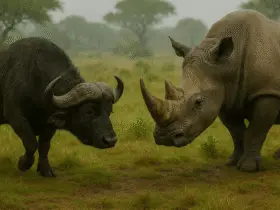
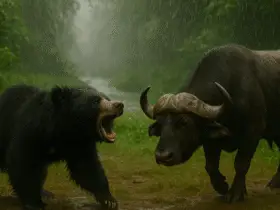

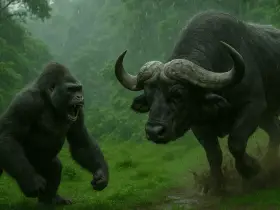
Leave a Reply